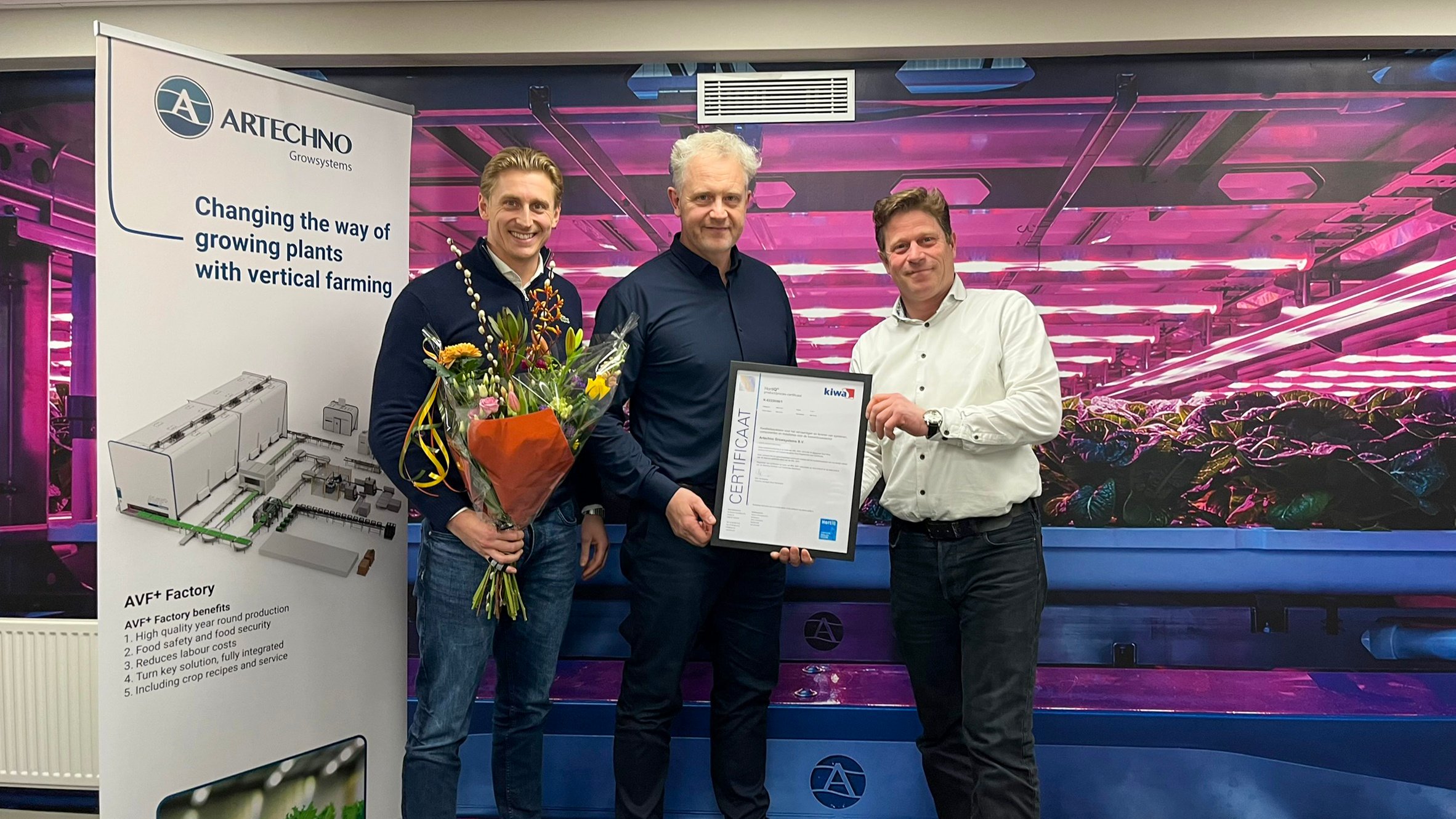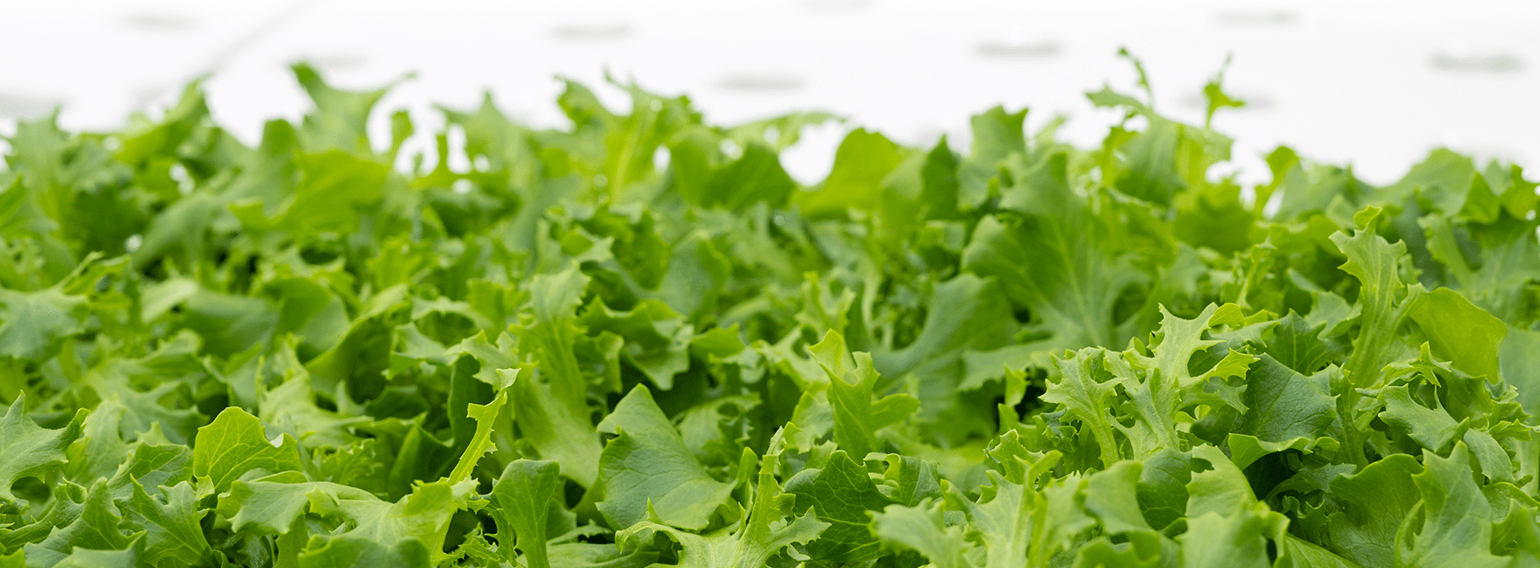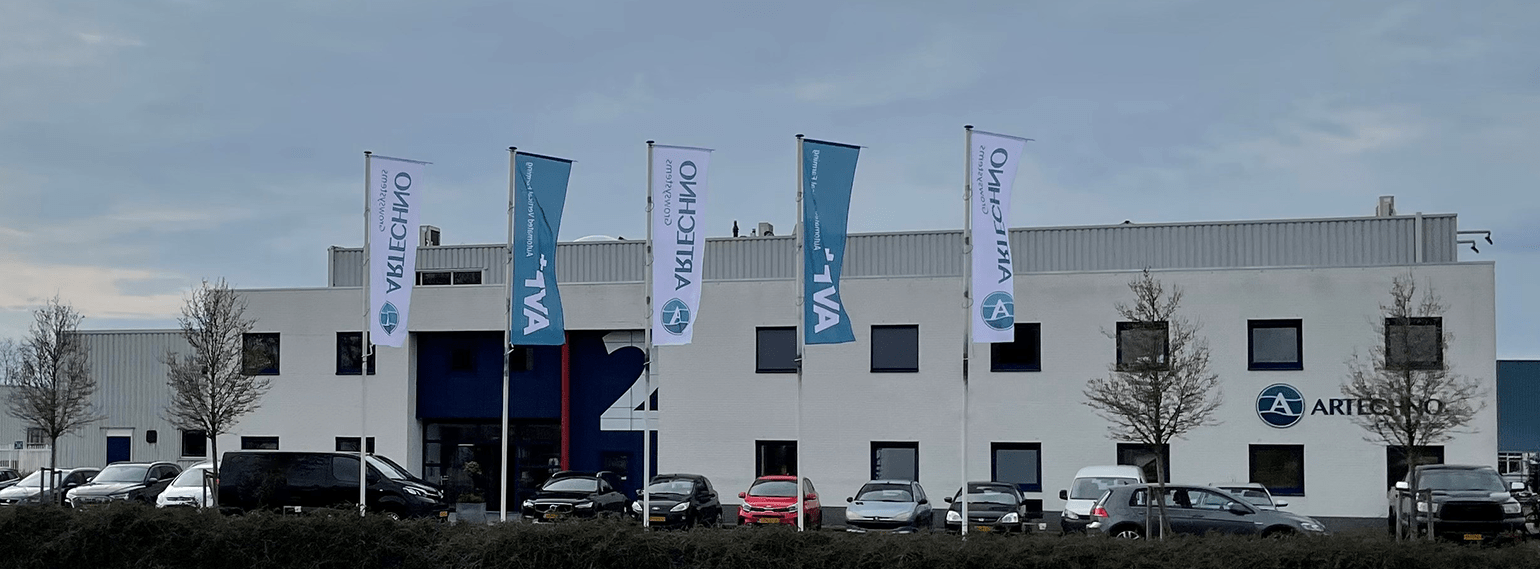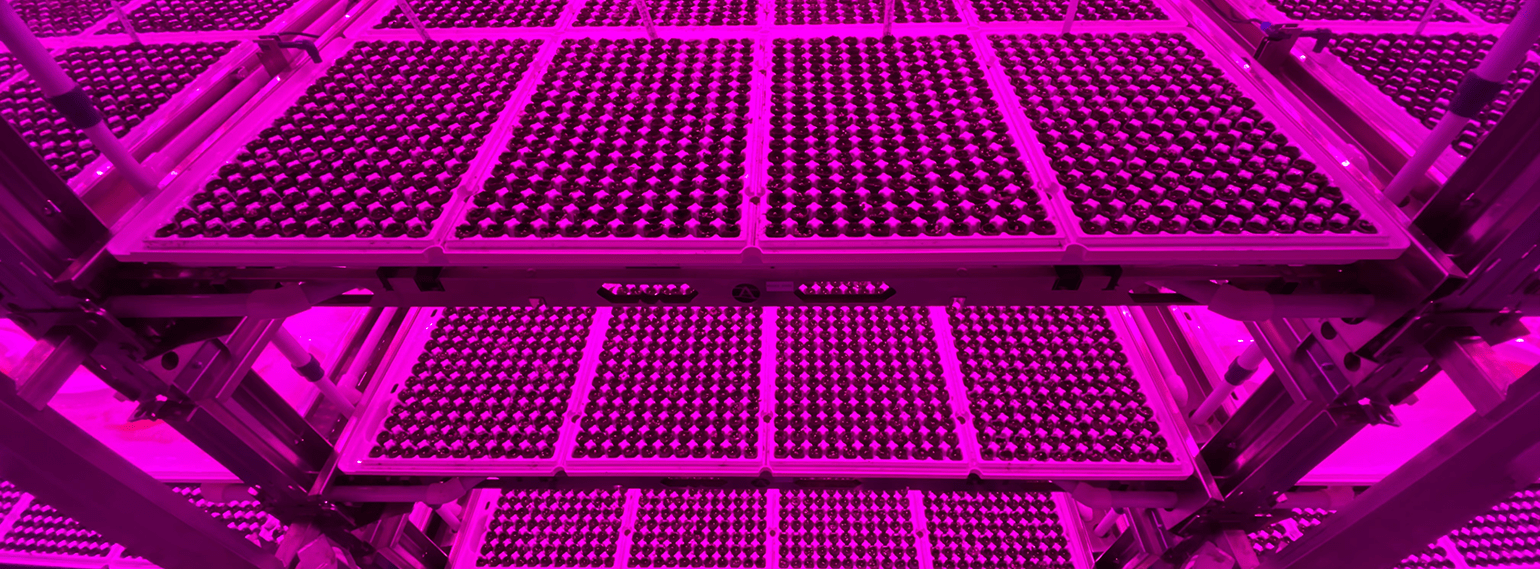What are the advantages and disadvantages of vertical farming?
Vertical farming has started a promising revolution in agriculture. Read all about the advantages and disadvantages of vertical farming in this article.
Contents
10 advantages of vertical farming
4 possible disadvantages of vertical farming
10 advantages of vertical farming
The popularity of vertical farming does not come out of the blue, as vertical farming has numerous advantages over traditional farming. We list 10 significant advantages of vertical growing systems.
Advantage 1: More species in one vertical farm
It is possible to grow different crops in different spaces in one indoor farm. In doing so, all environmental factors, such as light and nutrients, are matched to each crop in each cell. This allows you to grow various crops simultaneously in the same indoor farm, unlike traditional farming, where usually only one crop is produced at a time.
The maximum amount of crop species you can grow in a vertical farm is basically unlimited. It only depends on the size of the vertical farm. In contrast, in traditional agriculture, a maximum of three crops are harvested per year.
Advantage 2: Stable crop cultivation all year round
Vertical farming is not dependent on seasons but creates the optimal conditions for the plant to grow all year round.
The optimal conditions are controlled based on:- Light intensity
- Light spectrum (the combination of red, blue, far-red, green, and white light)
- CO2 supply and content
- Temperature
- Relative Humidity
- Air flow
- Water conditions (pH & EC)
- Nutrients
This gives complete control over the production and quality of your crops.
Advantage 3: Maximum harvest
With vertical farming, you can achieve stable crop production throughout the year and produce more crops from the same square meters of the cultivation area.
This is reflected in the following figures:
- One hectare of vertical farming offers the same output as 4 to 6 hectares of outdoor farming.
- A vertical farm produces 23 times more lettuce than an outdoor farm with the same area.
- To grow strawberries, 1 hectare of the indoor farm is needed compared to 30 hectares of outdoor farm to produce the same output [9]
Advantage 4: Up to 99% less water consumption than regular farming
Vertical farming requires 95% to 99% less water than regular farming. On average, you can count on about 20 liters of water per kilo of the crop, which on land compares to 250 liters per kilo of the crop. In Artechno Vertical Farming systems, however, 100% of water is recycled so only the water absorbed by the plant is used up. This means that this form of food production has a much smaller impact on the environment and the climate. [12]
Advantage 5: Protected from influences of weather, climate, natural disasters, and climate change
In traditional agriculture, crops are affected by weather and natural disasters, such as torrential rains, floods, or severe droughts. Global warming also affects traditional agriculture.
Due to the enclosed farm and controlled environmental conditions inside, vertical farms do not suffer from influences of weather and climate. As a result, they assure stable crop yields all year round, regardless of weather conditions.
Advantage 6: All crops are free of pesticides
Crops in indoor farming grow in a well-controlled indoor environment closed off from harmful insects and pests. This eliminates the need for the use of chemical pesticides, allowing you to grow crops pesticide-free with a vertical farm.
Advantage 7: Labor-friendly method of cultivation
In traditional farming, workers have to perform heavy physical work. They also face risks by working with heavy agricultural materials and toxic pesticides. Indoor farming requires much lighter and risk-free work, making it appealing to workers. For example, the main work performed in Artechno's vertical farming systems is semi-automatic. In this process, workers perform actions as an operator and controller while a machine takes care of most of the work.
Advantage 8: Much more space
Over the past 40 years, one-third of the world's land suitable for agriculture has decayed. Vertical farming is not dependent on fertile land and takes up relatively little space. Growing crops vertically dramatically increases production per hectare while taking up much less space than traditional farming.
Advantage 9: The sky is the limit (cultivation is possible everywhere)
From countries with a desert climate to regions with infertile soil, a vertical farm can be placed anywhere to produce high-quality crops. Urban agriculture is also an excellent solution to increasing urbanization. It makes cities less dependent on their food supply.
Advantage 10: Guaranteed healthy vegetables
In an indoor farm, the crops are grown in trays. The soil in this tray is enriched with nutrients, including phosphorus, potassium, and zinc. In traditional farming, there are constantly changing conditions that you always have to react to, making it difficult to control and optimize the quality of the crops.
The undisturbed substrate in indoor farming ensures that the crop always grows in the most optimal conditions. This greatly increases the quality of the crop, for example, the vitamins, minerals, and antioxidants it contains.
Summary: Due to the controlled indoor environment and not being affected by, for instance, weather conditions, vertical farming offers many advantages over traditional farming.
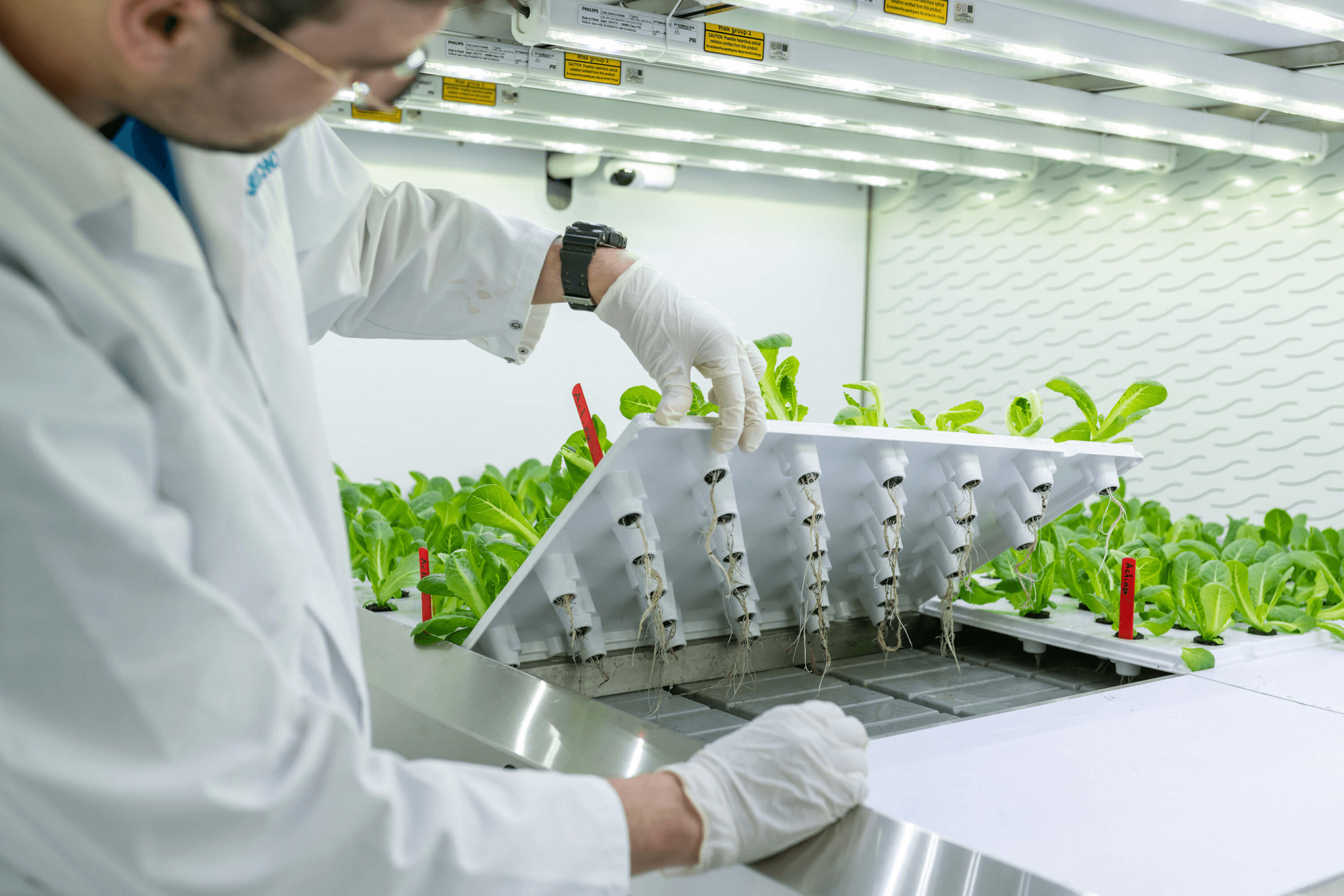
Possible disadvantages of vertical farming
Although there are many advantages to vertical farming, there are also some potential drawbacks.
Disadvantage 1: Costs
Vertical farming requires a sizable investment. However, that investment can be earned back much faster compared to traditional farming investments.
Artechno guarantees an ROI <5 years, and in certain situations, the ROI is achieved in as little as two years.
Disadvantage 2: Dependence on technology
Vertical farming depends on various technologies. Among other things, for lighting, temperature retention, and humidity in the vertical farm. This can make it very expensive to have a power failure that stops the growing process. However, more and more solutions are being developed for this, such as recycling the indoor farm's solar energy at night. Moving vertical farming into dedicated climate cells/chambers can also greatly help mitigate this risk and keep climate conditions long enough for power to return.
Disadvantage 3: Higher labor costs
It is sometimes mentioned that vertical farming involves high labor costs, but this is only the case for a vertical farm without automation. We mentioned above that most of the work in an Artechno vertical farm is semi-automated or even fully automated.
At Artechno, most of the work consists of processes, such as:
- Sowing
- Harvesting
- Cleaning of benches and trays
- Packaging
- Germinating
- Transplanting
- Farm management
At an Artechno farm, this can reduce the number of workers needed to perform the work by 25% to 50% in comparison to automated greenhouses and other vertical farming technologies.
Disadvantage 4: Higher energy consumption
Vertical farming uses a lot of energy; that's a fact. However, a vertical farm does not necessarily use more energy than other forms of agriculture. Climate conditions, such as heat, can mean that a vertical farm uses less energy than a greenhouse.
Also, an AVF+ Factory (automated) uses between 4 kWh and 7 kWh per kilogram of lettuce, depending on the crop variety. With future developments, this number will drop to an even lower amount of energy per kg produced.
Summary: Vertical farming brings challenges, such as a significant investment.
Conclusion
Vertical farming offers several advantages, including creating optimal conditions for your crops and pesticide-free cultivation.
There are also possible disadvantages, but Artechno Growsystems has found solutions for these. For example, the investment is recouped within two to five years and there are no high labor costs due to automation.
Are you interested in strawberry vertical farming? Or do you have any questions? Don't hesitate to contact us; we are happy to help you.

